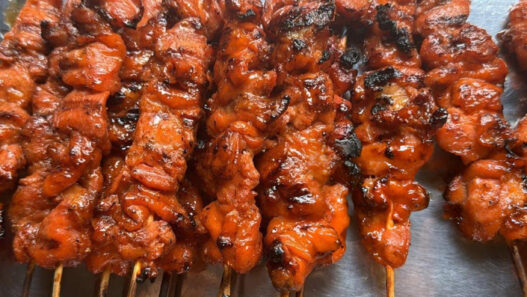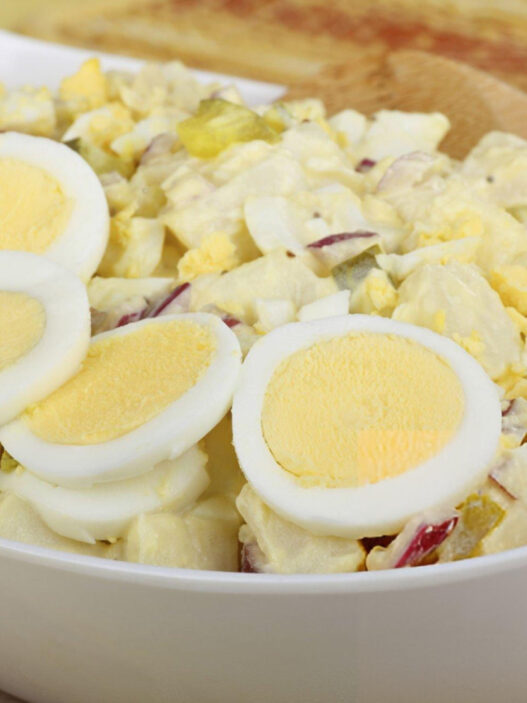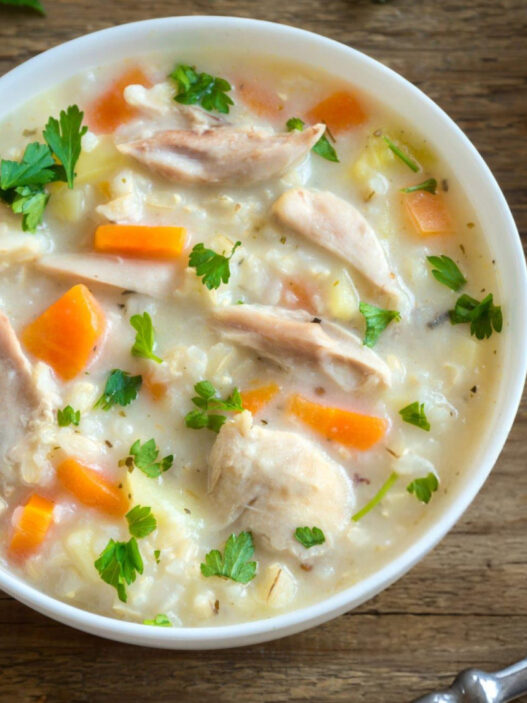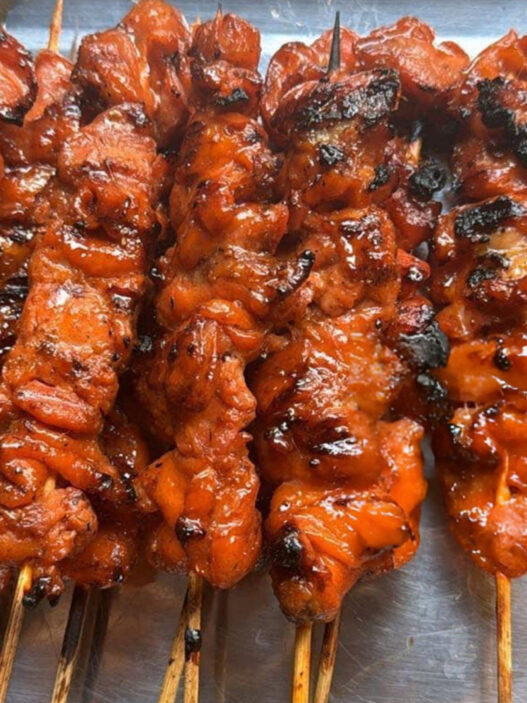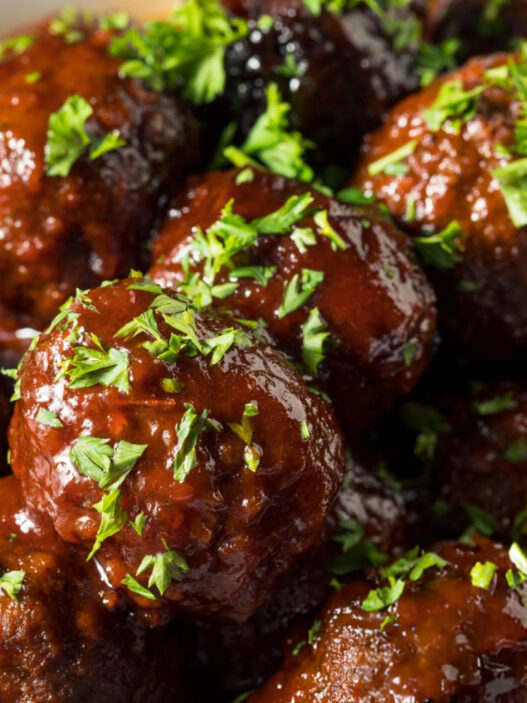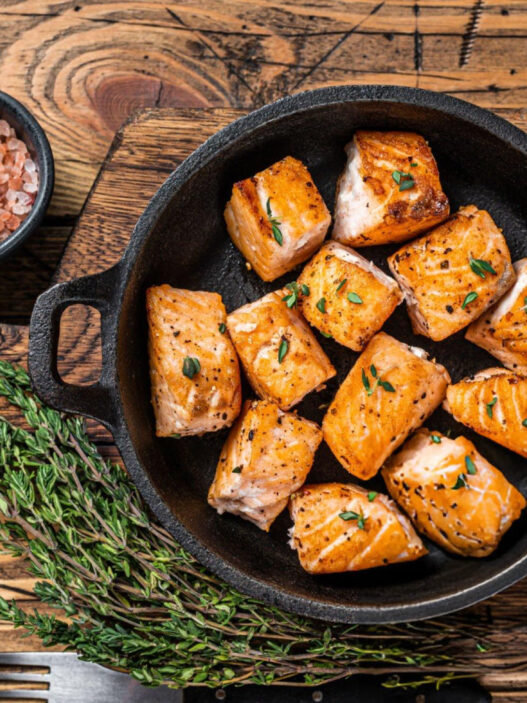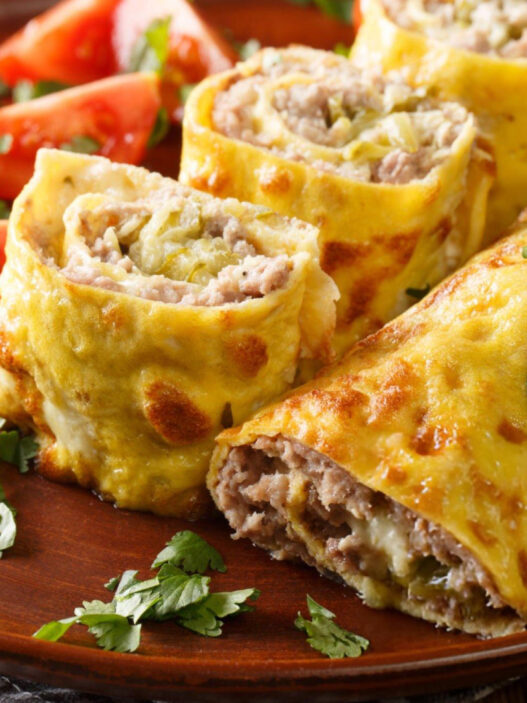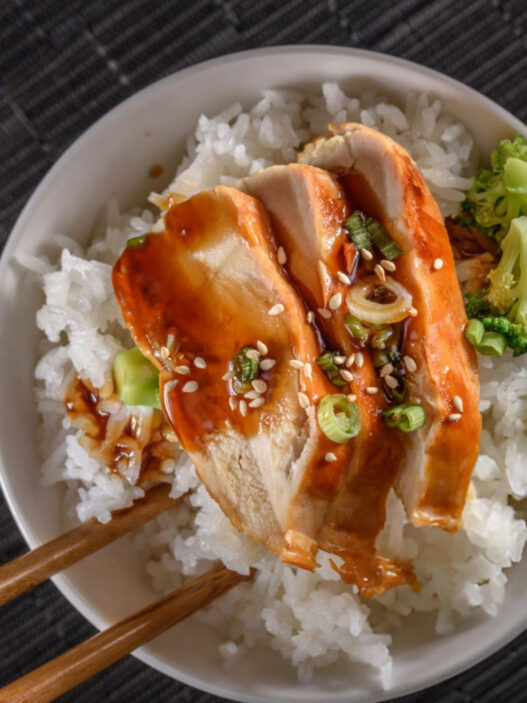Oruk is a treasured Middle Eastern specialty, offering bold flavor and hearty texture wrapped in a golden, crisp shell. These meat-stuffed bulgur dumplings are a labor of love, filled with spiced ground beef and crushed walnuts, then either shaped into individual ovals or baked in a tray for a comforting family-style dish.

Ingredients Breakdown
The heart of the dish is the deeply savory filling. Ground beef forms the base, offering richness and substance. It’s sautéed until caramelized, mingling with finely grated onions and warm spices. Crushed walnuts add unexpected crunch and earthiness, while parsley brings in a burst of herbal brightness that cuts through the richness.
Onions and parsley play dual roles in flavor and texture. Grated onions dissolve into the meat, lending both moisture and complexity, while parsley brings contrast and a touch of freshness that brightens the entire mixture.
To deepen the flavor, red pepper flakes and black pepper add a gentle heat. Turkish pepper paste (biber salçası) contributes smokiness and saltiness, tying all the elements together. The result is a well-rounded filling that holds up beautifully to the firm texture of bulgur.
The bulgur dough is made with fine bulgur—ideal for shaping and binding. If only coarse bulgur is available, a few pulses in the food processor help achieve the right consistency. Semolina, softened in warm water, is essential for creating elasticity in the dough, giving it flexibility while keeping it firm enough to encase the filling.
Double-ground lean beef is incorporated into the dough itself, providing protein and binding power without overpowering the balance of texture. The smooth, elastic dough that results is both strong and tender when baked.
Olive oil not only coats the shells but also crisps them during baking. A splash at the end ensures a golden, crack-free crust, while water—both warm and cold—helps control dough hydration, consistency, and shaping.
Step-by-Step Preparation Guide
Begin by preparing the filling. Heat olive oil in a sturdy pan, add the ground beef, and sauté until fully browned and all liquid has evaporated. Once the meat is dry and fragrant, stir in the grated onions and spices. Cook until the onions have softened and just started to caramelize. Stir in crushed walnuts and chopped parsley, mixing well to bind the filling. Set it aside to cool completely before using.
To prepare the bulgur dough, place the fine bulgur in a large bowl and add red pepper paste, cumin, salt, and red pepper flakes. Mix with your hands until evenly combined. Slowly pour in warm water to moisten the bulgur. Let it rest for 10 minutes to absorb the liquid.
While the bulgur rests, mix the semolina with water in a separate bowl and knead into a soft dough. Once the bulgur has soaked, knead it for five minutes with damp hands, then incorporate the semolina dough and continue kneading. Finally, add the ground meat and knead for 10 minutes until the dough is smooth, elastic, and no longer sticky.
To form individual oruk, wet your hands with cold water and shape the dough into small oval balls. Create a cavity using your thumb, gradually shaping the ball into a thin-walled oval shell. Add a spoonful of filling and seal the opening with moistened fingers. Shape into smooth ovals with pointed edges and place them on a greased tray. Repeat until all dough or filling is used. Brush generously with olive oil.
For the tray-baked version, divide the remaining dough in half. Press one portion into a greased round baking dish to form an even base. Spread the meat filling over the dough, pressing it gently. Flatten the second half of the dough on a greased surface, then lay it over the filling in sections, sealing edges with water. Oil the surface, score into diamonds or triangles, and prepare for baking.
Place both the individual oruk and the tray bake into a preheated oven. Bake for 35–40 minutes until crisp and golden. Midway through baking, brush with more olive oil to prevent cracking. Once done, let the tray-bake cool slightly before cutting into slices.
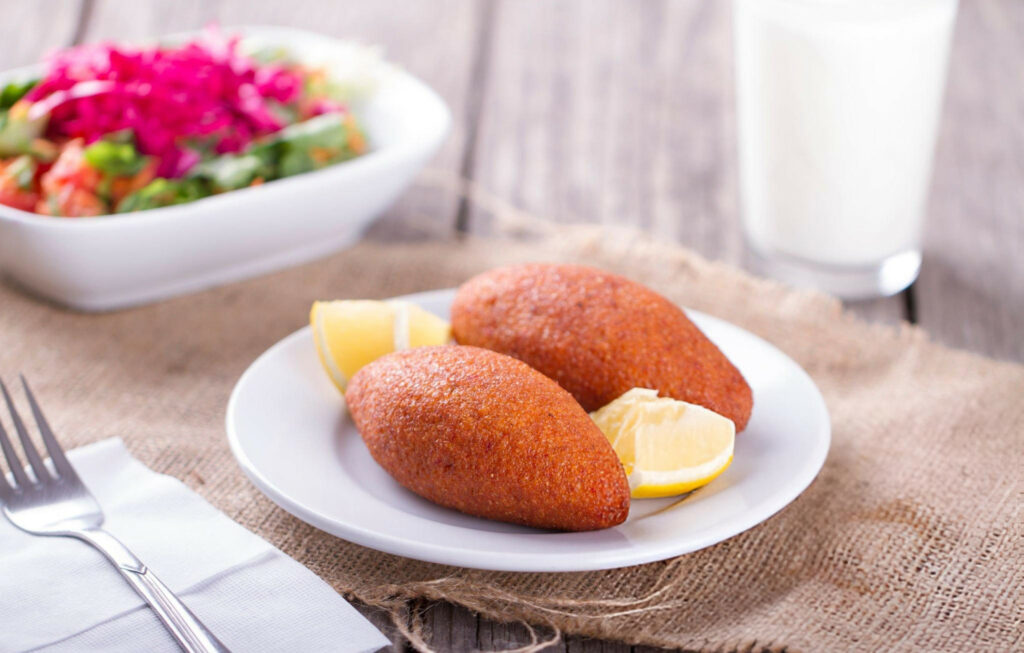
Recipe Tips & Frequently Asked Questions
Use cold water on your hands to prevent sticking while shaping
Keeping your hands cold and wet while handling the dough makes it easier to shape and prevents tearing.
Add oil toward the end of baking to prevent cracking in the bulgur shell
Bulgur dries out in the oven; a final brush of oil helps it stay intact and visually appealing.
Avoid overfilling to maintain the structural integrity of each oruk
Too much filling can lead to bursting; 1½ tablespoons per piece is ideal.
For better flavor, prepare the filling a day ahead to allow flavors to deepen
Letting the meat mixture rest in the fridge overnight enhances the taste and makes it easier to work with.
Can I freeze oruk before baking?
Yes, shape and freeze on trays, then store in bags. Bake straight from frozen—just extend the baking time slightly.
What can I use if I can’t find biber salçası?
Substitute with a mix of tomato paste and mild chili paste or harissa for a similar effect.
Can I substitute lamb for beef in the filling?
Absolutely. Lamb adds a richer flavor but releases more fat, so drain excess oil after cooking.
How thin should the bulgur dough be when shaping the shell?
About ¼ inch thick—thin enough to hold the filling without tearing, thick enough to keep its shape.
What to Serve With This Recipe
Cacık is the classic pairing for oruk. Its cooling blend of yogurt, cucumber, and dried mint refreshes the palate and balances the dish’s richness. A drizzle of olive oil on top and a sprinkle of sumac add a touch of extra flavor.
Serve oruk alongside lemon wedges for brightness, pickled vegetables for tang, or a simple shepherd’s salad. For a larger spread, include hummus, olives, tabbouleh, and warm pita bread—perfect for mezze platters or shared feasts.
Creative Variations
Adding pine nuts to the filling creates an extra layer of richness and crunch. Toast them lightly before mixing them in for a deeper nutty flavor.
Switching parsley for fresh mint or dill offers a new aromatic profile. Mint adds brightness, while dill brings an earthy depth that works beautifully with lamb variations.
For a plant-based twist, use vegan ground meat and skip the egg entirely. Chickpea flour can be added to help bind the dough, and the results are just as hearty and satisfying.
Homemade oruk is the kind of dish that rewards time and care with incredible flavor and texture. Whether served as perfectly formed oval dumplings or baked in a family-style tray, this dish brings warmth and satisfaction to any table. Rich, aromatic, and deeply traditional, oruk is more than just a meal—it’s a celebration of flavor, skill, and sharing.
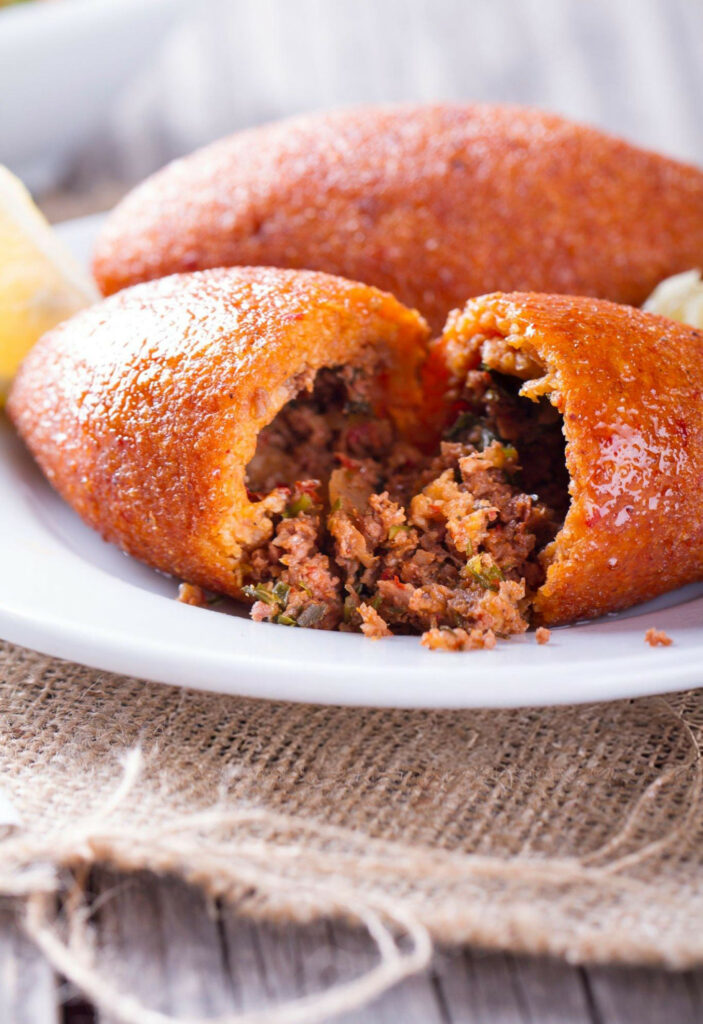
Ingredients
For the filling
250g / 9 oz ground beef (medium fat)
100g / 4 oz walnuts, shelled and finely crushed (not ground—keep texture for bite)
3 medium onions, finely grated
1 bunch flat-leaf parsley, finely chopped
30ml / 2 tbsp olive oil
10ml / 2 tsp ground black pepper
10ml / 2 tsp red pepper flakes (pul biber)
Salt to taste (minimum 2 tsp recommended)
For the bulgur dough
450g / 1 lb fine bulgur (koftelik bulgur; pulse coarse bulgur in a processor if needed)
1½ cups / 12 fl oz warm water (for soaking the bulgur)
1 cup / 167g semolina
½ cup / 4 fl oz warm water (for semolina)
250g / 9 oz extra lean ground beef (double ground, ideally using a food processor)
4 tbsp / 60ml Turkish hot pepper paste (biber salçası)
3 tsp / 15ml ground cumin
2 tsp / 10ml red pepper flakes (pul biber)
Salt to taste (remember pepper paste contains salt)
1 cup / 240ml additional warm water (for kneading)
Cold water (for shaping the dough)
Olive oil, for coating
Greased small baking tray (for the oval oruk)
Greased 32 cm / 12” round baking dish (for the tray-baked sini oruk)
Instructions
Start with the meat filling, which needs time to cool. Heat olive oil in a heavy-bottomed pan and add the medium-fat ground beef. Cook over medium heat, breaking up the meat with a spatula, until all its moisture has evaporated—this should take around 8–10 minutes. Once the meat is well browned, stir in the grated onions, salt, ground black pepper, and red pepper flakes. Continue to sauté for another 5–8 minutes until the onions are soft and starting to caramelize. Add the crushed walnuts and chopped parsley, mix thoroughly, and remove from heat. Set the filling aside to cool completely. (This savory mix also makes an excellent pasta topping.)
To prepare the bulgur dough, place the fine bulgur in a large mixing bowl. Add the pepper paste, cumin, salt, and red pepper flakes, and mix thoroughly using your hands. Slowly pour in 1½ cups of warm water, making sure the bulgur is fully moistened. Let it sit for 10 minutes to absorb the water.
Meanwhile, in a separate bowl, mix the semolina with ½ cup of warm water and knead until it forms a soft, pliable dough. Semolina plays a crucial role in binding the dough and giving it elasticity.
Once the bulgur has rested, knead it with wet hands for 5 minutes. Add the semolina dough and continue kneading for another 5 minutes, periodically wetting your hands. At this stage, the mixture should start to become cohesive and pliable. Incorporate the extra lean ground beef and knead again for 10 minutes until the dough is smooth and elastic.
To shape the oruk, prepare a bowl of cold water to keep your hands moist and prevent sticking. Pinch off a piece of dough about the size of a small tangerine. Roll it into an oval and use your thumb to gently press a cavity into the center. Carefully shape it into a hollow, thin-walled shell about ¼ inch thick, tapering the closed end. Repair any cracks using dampened fingers.
Spoon roughly 1½ tablespoons of the cooled filling into the cavity. Moisten the edges of the opening, pinch them to seal, and reshape gently into a pointed oval. Place the formed oruk onto a greased tray. Repeat the process with the remaining dough and filling. (This quantity yields approximately 5 oruk and enough extra bulgur dough for one sini oruk tray bake, or around 18 oruk total if shaping only individual pieces.) Once assembled, brush each oruk generously with olive oil.
To make the tray-baked sini oruk, divide the remaining bulgur dough in half. Lightly grease a 32 cm round baking dish with olive oil. Wet your hands and press one portion of the dough into a thin, even layer across the bottom of the dish, sealing any gaps. Spread the entire meat and walnut mixture over the base, pressing it down gently.
Oil a flat surface or board and use it to flatten the remaining dough into thin sheets. Lay these sheets over the filling like a patchwork, covering the entire surface. Use cold water on your hands to seal any edges or breaks, creating a smooth top. Drizzle 2 tablespoons of olive oil over the surface and score into diamond or triangle-shaped pieces.
Preheat the oven and bake both the oval oruk and the sini oruk for 35–40 minutes, or until the tops are golden and crisp. As the bulgur absorbs oil quickly, you may need to brush on additional olive oil during the final minutes of baking to prevent the shells from cracking.
Serve the oruk warm, straight from the oven. For the sini oruk, allow it to cool for 10–15 minutes to help it set before slicing and serving. A side of chilled cacık—a yogurt dip with cucumber and dried mint—makes the perfect refreshing accompaniment to this rich and savory dish.

Homemade Oruk Recipe
Ingredients
For the filling
- 250 g / 9 oz ground beef medium fat
- 100 g / 4 oz walnuts shelled and finely crushed (not ground—keep texture for bite)
- 3 medium onions finely grated
- 1 bunch flat-leaf parsley finely chopped
- 30 ml / 2 tbsp olive oil
- 10 ml / 2 tsp ground black pepper
- 10 ml / 2 tsp red pepper flakes pul biber
- Salt to taste minimum 2 tsp recommended
For the bulgur dough
- 450 g / 1 lb fine bulgur koftelik bulgur; pulse coarse bulgur in a processor if needed
- 1½ cups / 12 fl oz warm water for soaking the bulgur
- 1 cup / 167g semolina
- ½ cup / 4 fl oz warm water for semolina
- 250 g / 9 oz extra lean ground beef double ground, ideally using a food processor
- 4 tbsp / 60ml Turkish hot pepper paste biber salçası
- 3 tsp / 15ml ground cumin
- 2 tsp / 10ml red pepper flakes pul biber
- Salt to taste remember pepper paste contains salt
- 1 cup / 240ml additional warm water for kneading
- Cold water for shaping the dough
- Olive oil for coating
- Greased small baking tray for the oval oruk
- Greased 32 cm / 12” round baking dish for the tray-baked sini oruk
Instructions
- Start with the meat filling, which needs time to cool. Heat olive oil in a heavy-bottomed pan and add the medium-fat ground beef. Cook over medium heat, breaking up the meat with a spatula, until all its moisture has evaporated—this should take around 8–10 minutes. Once the meat is well browned, stir in the grated onions, salt, ground black pepper, and red pepper flakes. Continue to sauté for another 5–8 minutes until the onions are soft and starting to caramelize. Add the crushed walnuts and chopped parsley, mix thoroughly, and remove from heat. Set the filling aside to cool completely. (This savory mix also makes an excellent pasta topping.)
- To prepare the bulgur dough, place the fine bulgur in a large mixing bowl. Add the pepper paste, cumin, salt, and red pepper flakes, and mix thoroughly using your hands. Slowly pour in 1½ cups of warm water, making sure the bulgur is fully moistened. Let it sit for 10 minutes to absorb the water.
- Meanwhile, in a separate bowl, mix the semolina with ½ cup of warm water and knead until it forms a soft, pliable dough. Semolina plays a crucial role in binding the dough and giving it elasticity.
- Once the bulgur has rested, knead it with wet hands for 5 minutes. Add the semolina dough and continue kneading for another 5 minutes, periodically wetting your hands. At this stage, the mixture should start to become cohesive and pliable. Incorporate the extra lean ground beef and knead again for 10 minutes until the dough is smooth and elastic.
- To shape the oruk, prepare a bowl of cold water to keep your hands moist and prevent sticking. Pinch off a piece of dough about the size of a small tangerine. Roll it into an oval and use your thumb to gently press a cavity into the center. Carefully shape it into a hollow, thin-walled shell about ¼ inch thick, tapering the closed end. Repair any cracks using dampened fingers.
- Spoon roughly 1½ tablespoons of the cooled filling into the cavity. Moisten the edges of the opening, pinch them to seal, and reshape gently into a pointed oval. Place the formed oruk onto a greased tray. Repeat the process with the remaining dough and filling. (This quantity yields approximately 5 oruk and enough extra bulgur dough for one sini oruk tray bake, or around 18 oruk total if shaping only individual pieces.) Once assembled, brush each oruk generously with olive oil.
- To make the tray-baked sini oruk, divide the remaining bulgur dough in half. Lightly grease a 32 cm round baking dish with olive oil. Wet your hands and press one portion of the dough into a thin, even layer across the bottom of the dish, sealing any gaps. Spread the entire meat and walnut mixture over the base, pressing it down gently.
- Oil a flat surface or board and use it to flatten the remaining dough into thin sheets. Lay these sheets over the filling like a patchwork, covering the entire surface. Use cold water on your hands to seal any edges or breaks, creating a smooth top. Drizzle 2 tablespoons of olive oil over the surface and score into diamond or triangle-shaped pieces.
- Preheat the oven and bake both the oval oruk and the sini oruk for 35–40 minutes, or until the tops are golden and crisp. As the bulgur absorbs oil quickly, you may need to brush on additional olive oil during the final minutes of baking to prevent the shells from cracking.
- Serve the oruk warm, straight from the oven. For the sini oruk, allow it to cool for 10–15 minutes to help it set before slicing and serving. A side of chilled cacık—a yogurt dip with cucumber and dried mint—makes the perfect refreshing accompaniment to this rich and savory dish.





